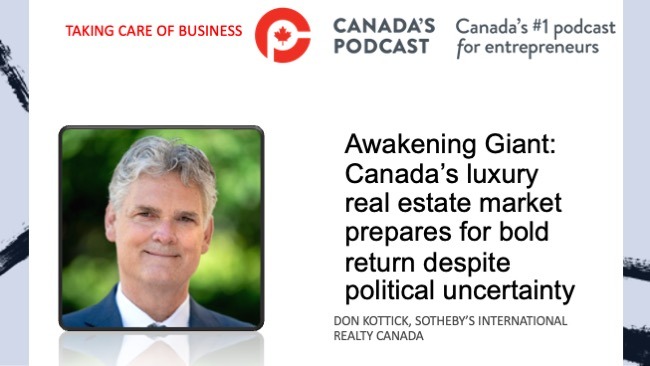Employment rose by 35,000 (+0.2 per cent) in March, and the unemployment rate held steady at 5.0 per cent, reported Statistics Canada on Thursday.

fauxels
There were more people employed in transportation and warehousing (+41,000; +4.2 per cent); business, building and other support services (+31,000; +4.4 per cent); as well as finance, insurance, real estate, rental and leasing (+19,000; +1.3 per cent). At the same time, employment declined in construction (-19,000; -1.2 per cent); “other services” (which includes personal and repair services) (-11,000; -1.5 per cent); and natural resources (-11,000; -3.2 per cent), said the federal agency.
“The number of employees grew in the private sector (+35,000; +0.3 per cent) in March, while there was little change in public sector employment and in the number of self-employed workers. Employment increased in Ontario (+21,000; +0.3 per cent), Alberta (+14,000; +0.6 per cent), Manitoba (+3,300; +0.5 per cent) and Prince Edward Island (+1,700; +2.0 per cent). There were fewer people employed in Saskatchewan (-4,300; -0.7 per cent). There was little change in employment in the other provinces,” it said.
“Total hours worked rose 0.4 per cent in March and were up 1.6 per cent on a year-over-year basis. Average hourly wages rose 5.3 per cent (+$1.68 to $33.12) on a year-over-year basis in March, compared with 5.4 per cent in February (not seasonally adjusted).”
Stats Can said for the fourth consecutive month, the unemployment rate was 5.0 per cent in March, just above the record low of 4.9 per cent observed in June and July of 2022.
“Most unemployed people in March 2023 had been unemployed for 13 weeks or less (63.4 per cent). The proportion who had been unemployed for 27 weeks or more—the long-term unemployed—was 16.0 per cent, down from 20.3 per cent a year earlier.”
Andrew Grantham, an economist with CIBC Economics, said the solid hiring to start 2023 continued in March, with the 35K increase in employment easily outstripping consensus forecasts for a modest 7.5K gain.
“While the Bank of Canada is expected to remain on hold next week, the still low unemployment rate and strong wage growth will likely see policymakers maintaining a bias towards further hikes, rather than hinting at the cuts markets have been pricing in, within the statement,” he said.
Douglas Porter, Chief Economist with BMO Economics, said the Canadian jobs machine just keeps on keeping on.
“The combination of still-strong job growth, a tight jobless rate, and +five per cent wage growth is likely still too hot for the Bank of Canada’s comfort. Even so, this generally solid report will not prompt the BoC off the sidelines. However, we’ll likely need to soon see some softening in growth and the labour market to help ensure that underlying inflation is headed back to the Bank’s two per cent target,” he said.
James Orlando, an economist with TD Economics, said the Canadian jobs market shows no sign of slowing.
“Today’s gain of 35k jobs extends the streak of monthly employment gains to seven months, bringing the tally to 382k jobs gained over that time. Looking beyond the headline, the fundamentals remain solid. Workers continue to clock in more hours every week and their wages are rising. With all the jobs gained in the private sector (although nearly half were part-time), there is strong underlying momentum that continues to build in the Canadian economy,” he said.
“The Bank of Canada knows the economy is running too hot. Continued labour market strength is boosting the incomes of Canadians, enabling them to increase their spending notwithstanding the high interest rate environment. Today’s report corroborates the signal we have been getting from credit/debit card spending data, and supports our forecast for Canadian GDP to come in around two per centfor the first quarter of 2023. That is not the kind of growth the BoC wants to see when it is trying to ensure that inflation gets back to target. Although today’s report isn’t enough to get the Bank off the sidelines, the fact that nothing so far seems to be able to crack the Canadian jobs market juggernaut must be worrying.”
“Employment has increased in March 2023 and indicators still show a tight labour market with high wage growth. It once again reflects the resiliency of the Canadian economy and labour market, but it also means that the Bank of Canada could be prompted to rethink its decision to pause interest rate hikes,” said David-Alexandre Brassard, Chief Economist, CPA Canada.

(Mario Toneguzzi is Managing Editor of Canada’s Podcast. He has more than 40 years of experience as a daily newspaper writer, columnist, and editor. He worked for 35 years at the Calgary Herald, covering sports, crime, politics, health, faith, city and breaking news, and business. He works as well as a freelance writer for several national publications and as a consultant in communications and media relations/training. Mario was named in 2021 as one of the Top 10 Business Journalists in the World by PR News – the only Canadian to make the list)
About Us
Canada’s Podcast is the number one podcast in Canada for entrepreneurs and business owners. Established in 2016, the podcast network has interviewed over 600 Canadian entrepreneurs from coast-to-coast.
With hosts in each province, entrepreneurs have a local and national format to tell their stories, talk about their journey and provide inspiration for anyone starting their entrepreneurial journey and well- established founders.
The commitment to a grass roots approach has built a loyal audience with over 120,000 downloads and thousands of subscribers on all our social channels and YouTube. Canada’s Podcast is proud to provide a local, national and international presence for Canadian entrepreneurs to build their brand and tell their story.





